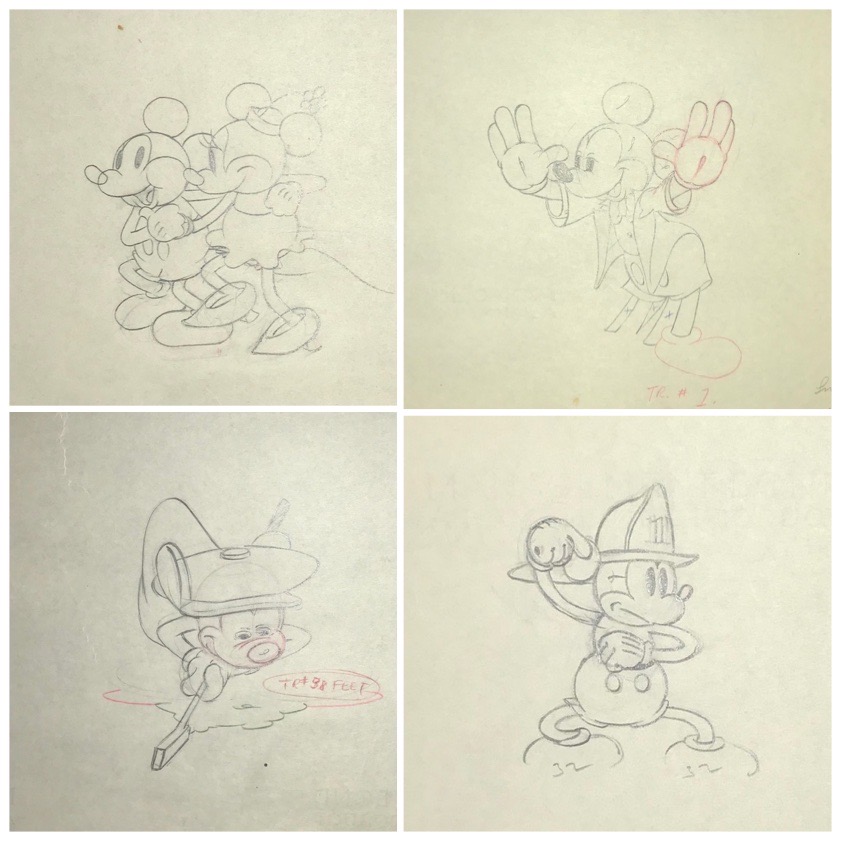Mickey has been a classic draw for Disney fans since 1928. Strangely, the fascination in terms of collecting started to wane in the mid-90s, and only in the last few years has he started having a resurgence. Now, since the 90th anniversary of Mickey Mouse in 2018, collectors are snapping up the oldest Mickey Mouse drawings and cels of the character they can find. They are especially keen on art from cartoons where Mickey was voiced by Walt Disney between 1928 and 1947. The exceptions are Carl Stalling, who voiced Mickey in 1929’s The Karnival Kid, and Clarence Nash, for 1934’s The Dognapper.
Though Mickey Mouse appears in 130 Disney cartoons, Mickey didn’t have any official shorts between 1955 and 1983. He was one of the stars of The Mickey Mouse Club, but for over 25 years there were no Mickey shorts created for theatrical release.
Mickey was created in 1928 by Ub Iwerks as an underdog that appealed to all those looking to pull themselves up by their American bootstraps. It may be that his first words, uttered in 1929’s Karnival Kid, were “hot dogs! hot dogs!”, but with his exclamations of 30s slag words “swell!” and “gee whiz!” that made him beloved by fans around the world.
Based on the swashbucklers of the silent era, Mickey Mouse was always getting himself into trouble, and appealing to folks who were feeling low from the financial strain of the depression, playing characters from all walks of life, from swanky tuxedoed mouse-about-town to mouse of the people firefighters to intrepid explorers like prospectors and world travelers. Always a lover of dogs, shorts with his pal Pluto appeal to pet lovers, just as the shorts where he and his lady love Minnie have romantic adventures appeal to couples who seek an innocent representation of their partnership.
Steamboat Willie premiered at Universal’s Colony Theater in New York on November 18th, and was an immediate hit. By 1932, there was a fan club, the Mickey Mouse Club had a million members. By 1934, Mickey merchandise brought in $600,000 a year. The financial success of the character really is responsible for building the huge media empire we all know today. It’s true that, as Walt said, “It all started with a mouse”.
To me, some of the best and most affordable animation art is the graphite art from early Mickey Mouse cartoons. To be honest, those have always been my Mickey Mouse cartoons. Early characterization of Mickey Mouse was much edgier, and more interesting. From the late 20s to the mid-30s, Mickey Mouse was rubbery, while the animators were experimenting with squash and stretch, and working out how to express action and character through animation.
Finding beautiful Mickey Mouse production drawings from the late 20s to mid-30s is exciting for Disney fans, and one way you can tell the really old Mickey Mouse drawings is by the number of peg holes in the drawing, with 2 holes being prevalent up until 1935. You can read about the evolution of the peg HERE.
How cool is it to get Mickey Mouse drawings from back when he was in his first formative years? Those drawings are in the hundreds, not the thousands, unlike drawings from The Sorcerer’s Apprentice in Fantasia, which go for thousands of dollars. The Sorcerer’s Apprentice is one of the most recognizable cartoons from the character, but is also right after the character’s redesign by Disney animator and member of the 9 Old Men, Freddie Moore.
This one original drawing is interesting in that it was used for both 1930’s The Shindig and 1932’s The Whoopee Party.
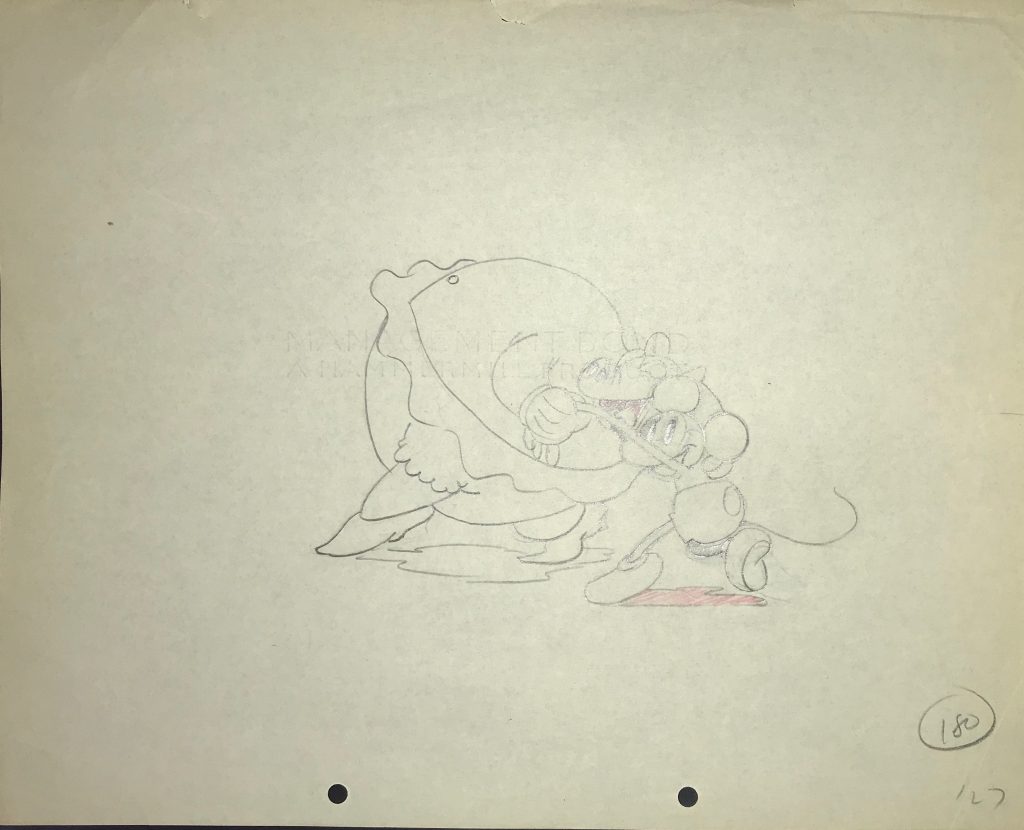
The joyful character Mickey is dancing with is a pig, in case you wondered. Here is a video from 1930:
Here are some freaky elements of the most desirable animation art images and Mickey Mouse drawings and cels: the best are when you can see both ears laying side by side on his head (and that goes for Minnie Mouse, too!). An animated expression, like one of shock or surprise, or that famous determined look he did so well, is also very important.
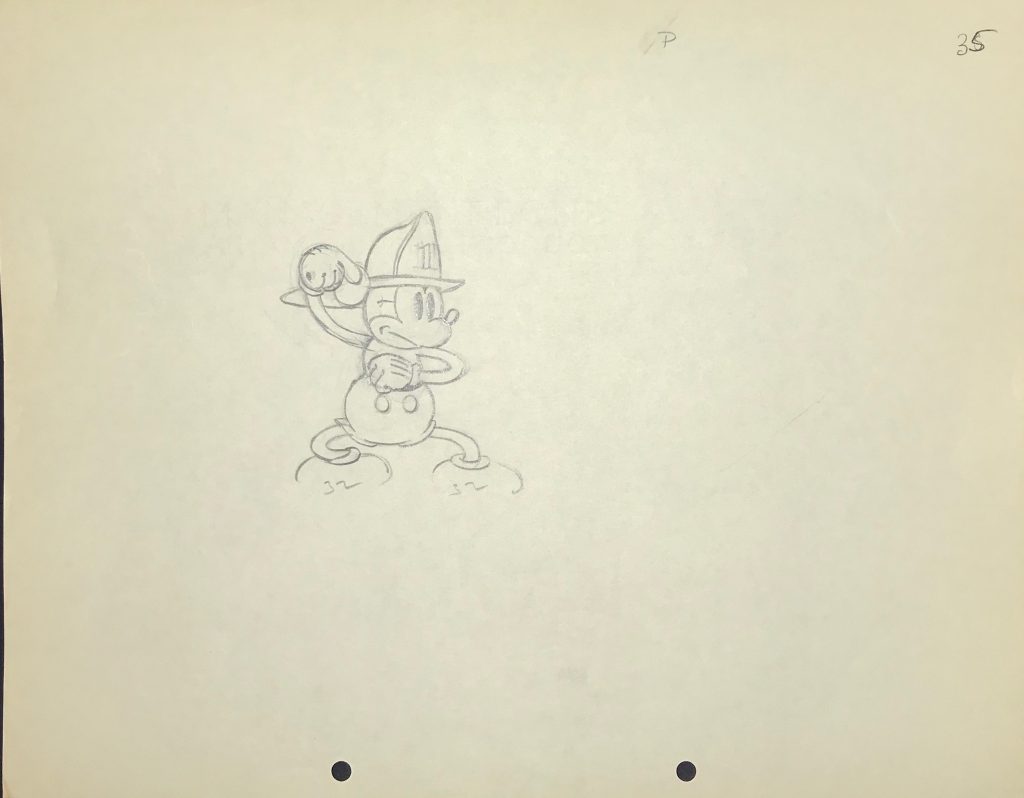
Mickey Mouse original drawing: Mickey’s Fire Brigade, 1935 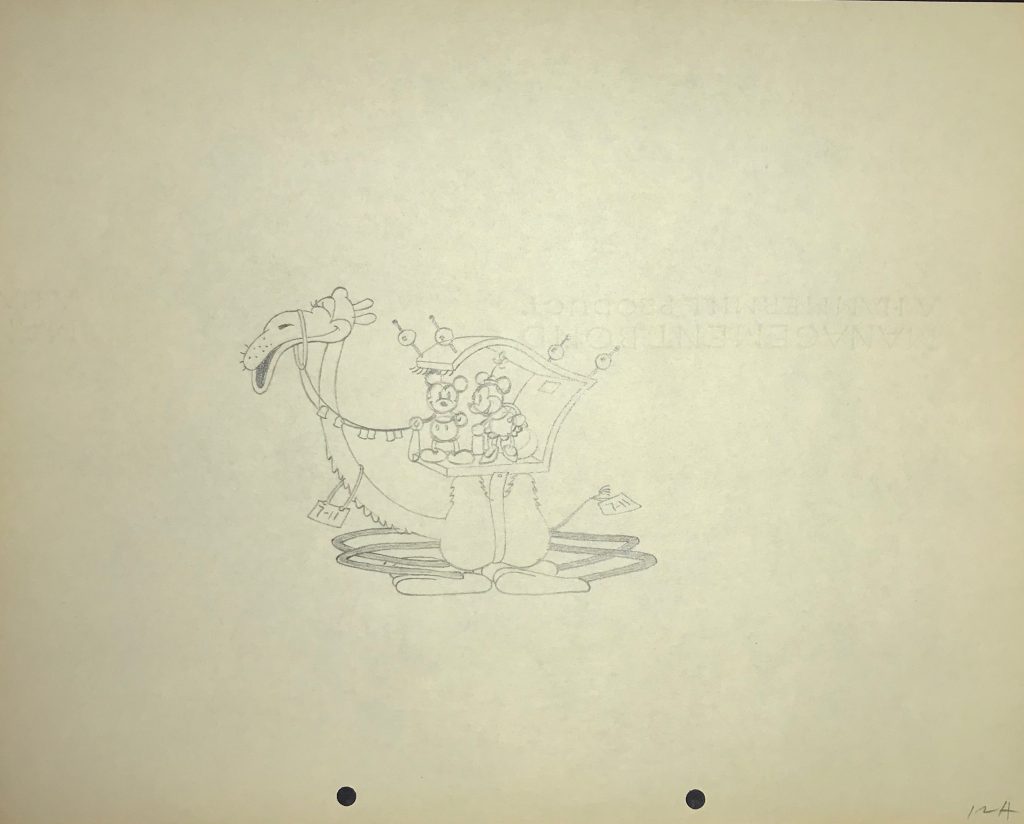
Mickey and Minnie original drawing from 1932’s Mickey in Arabia
Many folks want drawings and cels of Freddie Moore Mickeys. Moore who was known at the resident Mickey specialist. In 1938 the famous animator redesigned Mickey’s body away from looking as much like what Ward Kimball called Mickey’s “rubber hose, round circle” design, or what made when they used squash and stretch on him look so noodle-like. Mickey’s eyes have changed a lot through the years, but Freddie Moore ultimately gave him the smaller white eyes with pupils you see in more recent cartoons.
Here’s an original Mickey drawing from 1937, as he is changing:
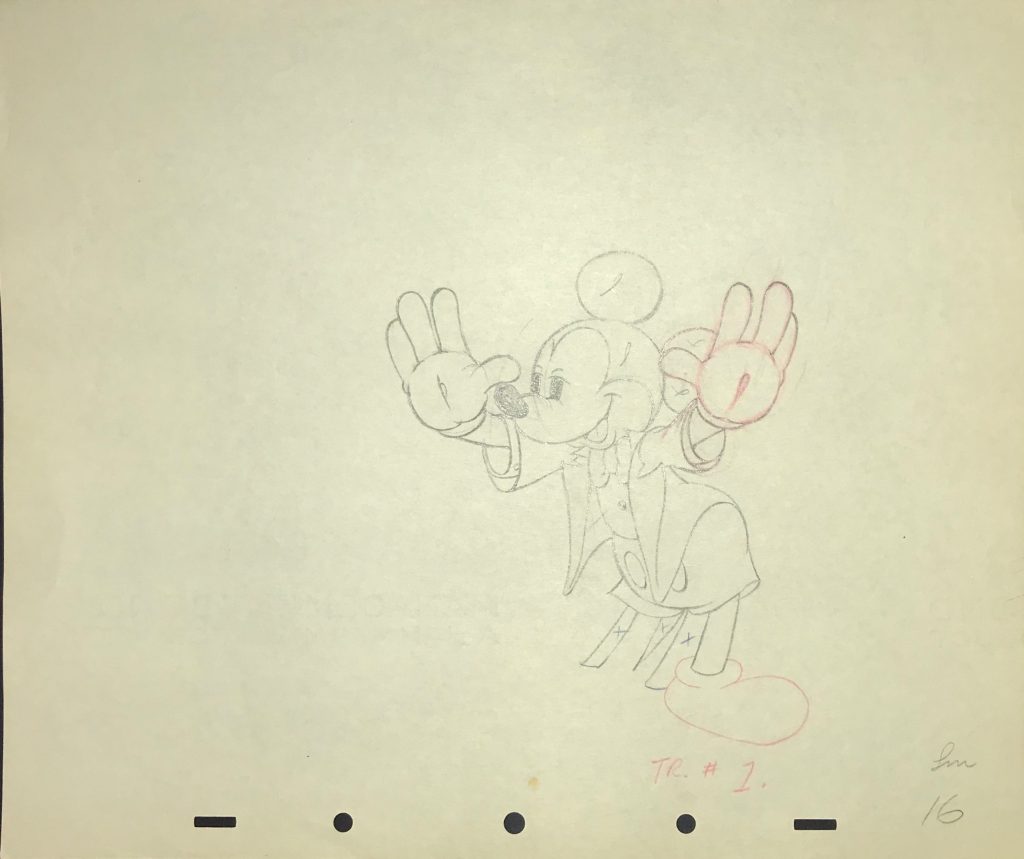
And here are two drawings from 1939 and 1941, both from very famous Mickey Mouse cartoons:
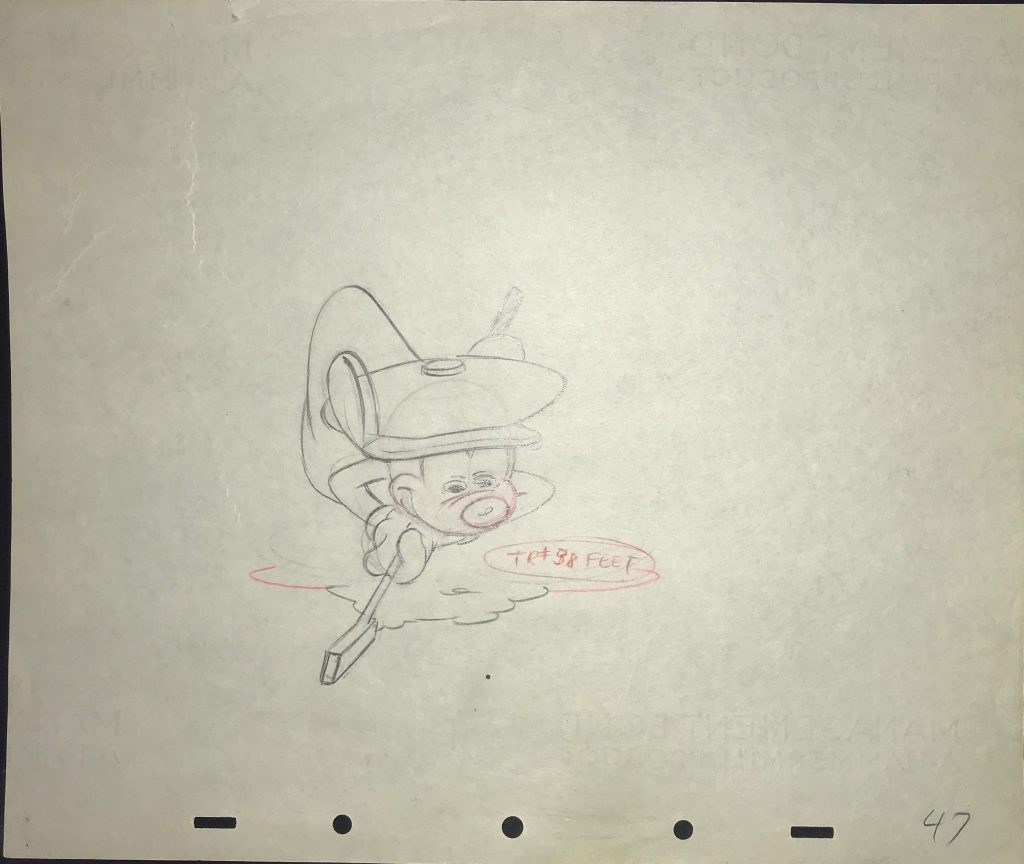
Mickey Mouse original drawing: Canine Caddy 1941 
Mickey and Pluto original drawing: Society Dog Show 1939
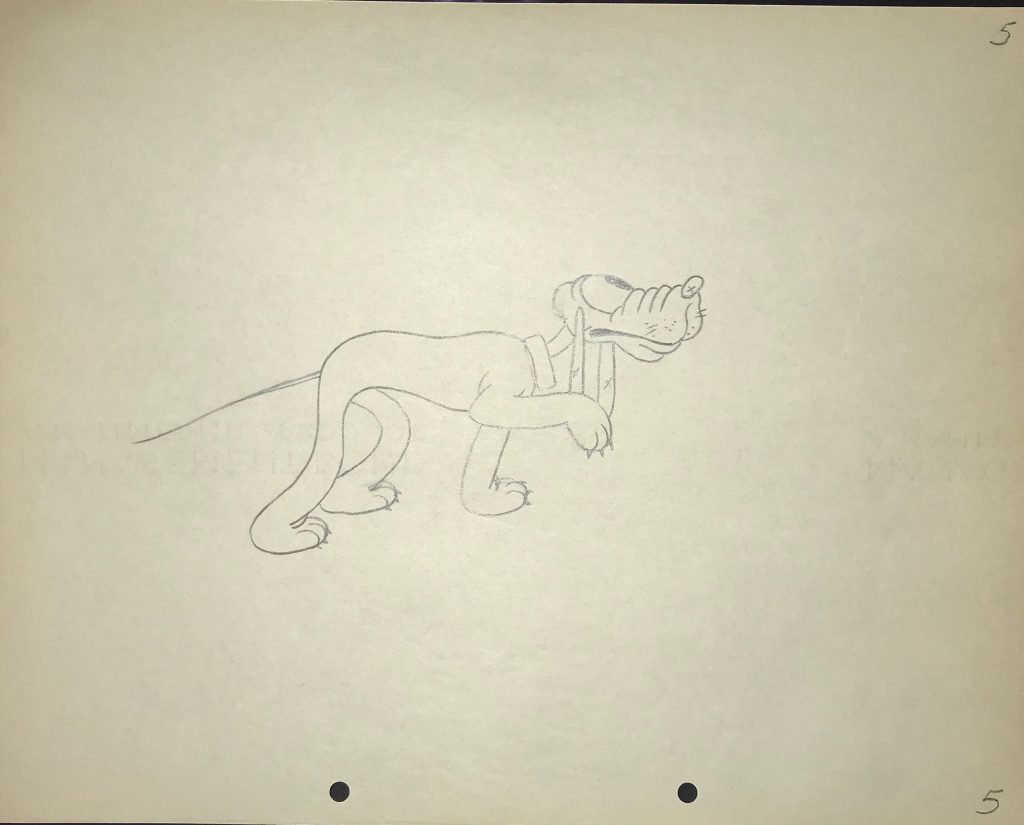
Still, the Mickey cartoons from the early 30s have a truly vintage feel and represent a time when the Mickey Mouse Club was new and animation was influencing kids just coming out of the depression. At the time, Mickey was a cheeky rogue. Minnie Mouse from that era is also fascinating, as she was stronger, more opinionated, and seemed an equal part of their partnership, pre-polka dot, and pre-bow, when she still sported a hat with a flower on top.
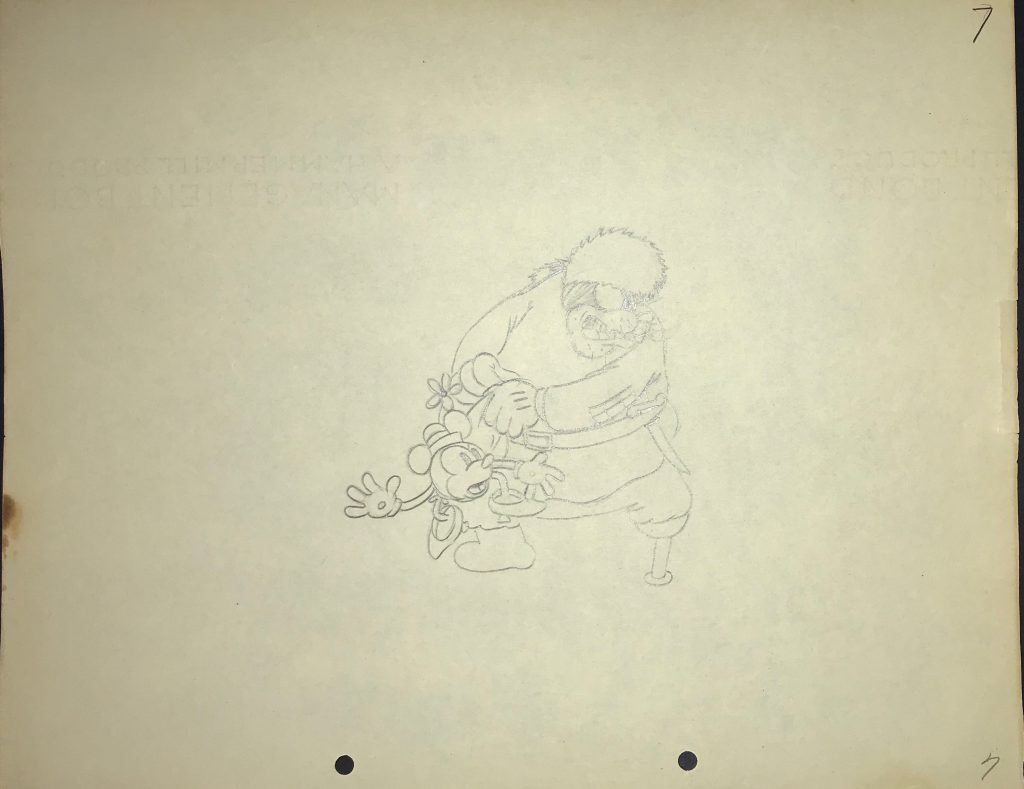
Minnie Mouse and Peg Leg Pete original drawing: Klondike Kid 1932 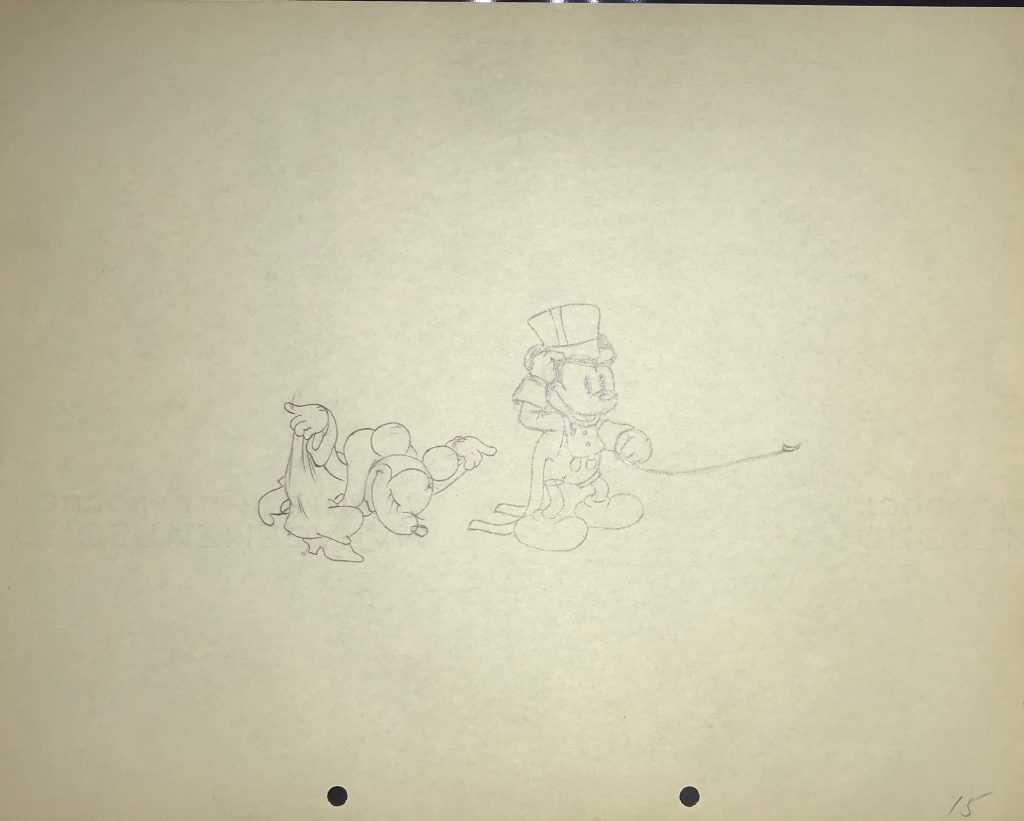
Mickey and Minnie original drawing: Mickey’s Gala Premier 1933
They gave her a makeover in the 1940s, and she’s looked almost exactly the same since then. The way both she and Mickey were drawn and characterized in their early cartoons is what created the love for those two from fans all over the world. It was in 1932, after all, when Walt Disney got an honorary Oscar for his creation.
Whether you are more a fan of pre-1935 Mickey (before Freddie Moore started altering his design) or post-35, when he starts looking more like the Mickey we see today, Mickey represents classic, vintage America in a way that little else can.
To see the collection of all the vintage Disney Mickey Mouse drawings available, GO HERE.

